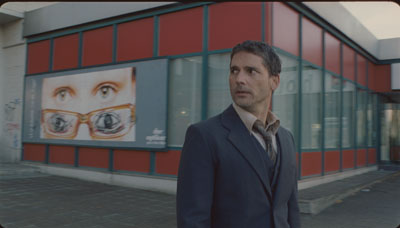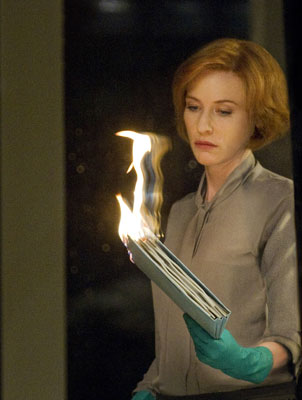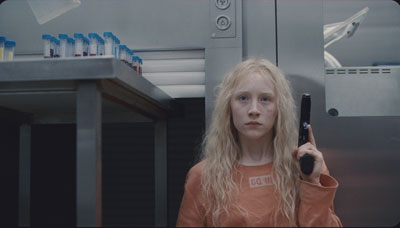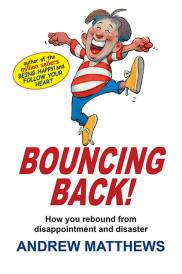Hanna Interview with Director Joe Wright

Joe Wright Hanna Interview
Cast: Eric Bana, Cate Blanchett, Saoirse RonanDirector: Joe Wright
Genre: Thriller
Synopsis: Award-winning director Joe Wright creates a boldly original suspense thriller with Hanna, starring Academy Award nominee Saoirse Ronan (The Lovely Bones, Atonement) in the title role. Raised by her father (Eric Bana of Star Trek), an ex-CIA man, in the wilds of Finland, Hanna's upbringing and training have been one and the same, all geared to making her the perfect assassin. The turning point in her adolescence is a sharp one; sent into the world by her father on a mission, Hanna journeys stealthily across Europe while eluding agents dispatched after her by a ruthless intelligence operative with secrets of her own (Academy Award winner Cate Blanchett). As she nears her ultimate target, Hanna faces startling revelations about her existence and unexpected questions about her humanity.
Release Date: July 28th, 2011
Website: www.hannathemovie.com
Interview with Joe Wright
Question: What drew you to make Hanna?Joe Wright: The script was full of particular elements of interest to me, with an atmosphere that I was intrigued by. But there was lots of space left in it, and I mean that as a compliment - there was space left for me to invest my own feelings and concerns. First and foremost, what interested me was the character of Hanna; we don't see enough films with a teenaged female protagonist. Thematically, I've always been intrigued by characters who are holy fools - like E.T., Chauncey Gardiner in Being There, and Kaspar Hauser in Werner Herzog's movie - and who are not really of this world. Those last two, especially, have grown up in a world that doesn't have the pressures of outside society and so-called civilisation. They come into our world with an adult consciousness but with the naïveté of a child. I find it fascinating how someone like that experiences the world, because it offers us a subjective opportunity to see things afresh.
Question: So you wanted to put a character like that through their paces
Joe Wright: Well, it's about looking through their eyes. My work is generally quite subjective, from one character's point of view; Atonement appears to be a three-stranded narrative, but actually the whole thing is seen through the prism of Briony's guilt. I like fairly extreme "realities;" the schizophrenic's in The Soloist would be another example.
Question: Perhaps you couldn't have made Hanna until after you'd done The Soloist, because there's a great deal of externalised activity to the character's reality in that, which may have been good preparation for the action Hanna is central to in this�?
Joe Wright: Maybe. When one finishes a film, one never really knows what one has learned from it until one puts it into practice for the next movie. For my craft, the action elements of the story did attract me. I've always thought of action as being pure cinema, because the same effect can't be achieved in any other medium; dialogue can be played out onstage or on radio, and beautiful pictures can be photographed or painted. Apart from sports coverage, there isn't anywhere else that you can find anything like it. I wanted to experiment with the visceral impact, delivering it but perhaps in a slightly different way. I was thinking back to the French New Wave, and Robert Bresson's Pickpocket. Those sequences where the pickpockets are at work are extraordinarily beautifully choreographed action sequences. By which, I don't mean with fighting and punching and kicking; you're telling the story through the actions of a body, of a character.
For a far more personal reason, what drew me to Hanna was its female protagonist. A very dear friend of mine was raped around the time that I was reading the script, and I was so angry; I had been thinking about how women are placed within society, and about what it means to be a young woman in today's cultural climate. I look around, and I wonder whatever happened to feminism; it wasn't meant to be a passing fashion, it was meant to change the world forever. I'm appalled by the sexualisation of teenagers, and by Hello! Magazine culture. These things scare me. There was an impulse to create, as a response to what happened to my friend, a strong female character who had grown up outside of gender sexual politics, who had never met another woman, never seen advertising nor had a clue what lip gloss was.
I was interested in juxtaposing Hanna with the [vacationing] family - especially Sophie and [mother] Rachel. As a creature of today, Sophie is a contrast to Hanna. I wanted to explore these two different images of teenage girls. Sophie is ridiculously infatuated with the whole prevalent teenage girl culture, and I saw in Rachel a lot of women I know - of my generation and a bit older - who have lost their way in terms of their feminist socio-political ideals. I worry for them, and for their children too. A bit heavy, but that's what I was thinking about�
Question: Hanna's most extensive scenes with another female character are those with Sophie. Both of the actresses, Saoirse Ronan and Jessica Barden, perform at a high caliber.
Joe Wright: I would let Saoirse Ronan and Jessica Barden take the lead; the kiss between them was suggested by Saoirse Ronan. She said she thought it was what Hanna would do. Saoirse Ronan and I also talked about how Hanna has no preconception of what is beautiful and what is ugly. Everything just is what it is; one of the core aspects for us, which Saoirse Ronan portrays beautifully, was that Hanna judges no one. That's anathema to most of us, as we are brought up and taught to constantly judge people, places, and things against ourselves, our aspirations, and our fears.
Question: Around the time of Atonement, you said that Saoirse Ronan has the empathy to feel and express the emotions of another human being. But how did you both prepare her to play this unique character?
Joe Wright: Going back again to what drew me to make this movie, the real dealbreaker was Saoirse Ronan; if she hadn't been involved, I'm not sure that I would have felt confident in going ahead with the film. Once I knew that she was on board - and had wanted me to direct - then I felt, "We can do this." Because my safety net was, you can just put the camera on Saoirse Ronan in closeup - what she's thinking - and that will see you through a scene. But Saoirse Ronan and I talked lots, including about emotions. On Atonement, she and I started with just how Briony might walk. The character grew from the short, precise, controlling steps that she made. On Hanna, we worked with [stunt coordinator and fight choreographer] Jeff Imada to create a very centered being, someone who stood grounded and balanced with a relaxed yet good posture. Hanna doesn't have the nervous twitches or slanted shoulders that come from years of social interaction. [Laughs] Her movements as Hanna are quite aerodynamic, though I was forever telling Saoirse Ronan to hold her elbows in when she ran; she has that natural tendency to flail them about.
 Hanna doesn't move unless, or until, she has to. Her eyes don't "find" something; they go straight to it. She also doesn't really make any outward facial expressions, apart from when she's fighting and becomes almost animalistic - with snarling.
Hanna doesn't move unless, or until, she has to. Her eyes don't "find" something; they go straight to it. She also doesn't really make any outward facial expressions, apart from when she's fighting and becomes almost animalistic - with snarling.The voice was quite important as well; once Saoirse Ronan had the centered physicality of Hanna, she found something of an ethereal voice for the character. At the same time, I got her to lower her voice about an octave or two. That made Saoirse Ronan feel slightly more of the earth; therefore, she was simultaneously capturing the earth and the air that characterise Hanna. At 16, Saoirse Ronan now has even more of a handle on her craft than she did at 12.
Question: With Marissa, we're seeing a very different Cate Blanchett portrayal�
Joe Wright: Marissa is kind of based on a primary school teacher I had! Her name was Priscilla, and she was sexy and well-kept. She wore thick make-up and stockings that had a sheen and made noise when she walked. At story time, the girls used to sit and stroke her legs as they sat around her. She had this vibe, and she came to mind when I was thinking about Marissa; since Hanna is also a fairy tale, I was conceiving of the characters as archetypes and then layering them with character specifics. So Marissa was a combination of Priscilla, President George W. Bush, and a wicked witch; in my parents' puppet shows, the witches had red hair and wore green, so I asked [costume designer] Lucie Bates to always have Marissa wearing green, and the red hair suits Cate Blanchett very well I think.
Cate Blanchett is not a vain actor at all, and was up for wearing too much make-up; I wanted to see the pores through it. The teeth thing -
Question: The obsessive flossing and brushing -
Joe Wright: That comes from what I see as the American obsession with teeth, really. From an English person's point of view, it's extraordinary how uniform American teeth are. So I thought Marissa would take it almost to the point of harming herself. I spoke about that with Cate Blanchett. Later, in the middle of one shot she sucked her teeth and made this strange little noise. I watched it thinking, "This is fantastic; Marissa is tasting the blood of this moment." It gives her a thrill.
Question: Why or how did the fairy tale take come to you?
Joe Wright: Because it could work on a number of levels throughout. The theme park at the end is one of the most literal fairy tale references, while the tune that Isaacs whistles is one of the more atmospheric ones. Then there's the idea that Hanna flicks a switch and changes her destiny, for instance - that's like, will she drink from the chalice? We made the box and the switch big and red.
The story as a whole has a lot in common with fairy tales like the Little Mermaid or Hansel and Gretel. There's a family - of sorts - living in a wood cabin in a forest, and rites of passage unfold in the story; the child has to leave the house and go into the world, and experiences and meets evil - which has to be overcome. Fairy tales to me are never happy, sweet stories; they're moral stories about overcoming the dark side, the bad.
In terms of characterisation, Erik is the archetypal fairy tale father. He's an earthy woodcutter - like Rapunzel's father - and they live in the forest. Erik has the spirit of the trees in him, and Eric Bana was able to play that. My dad was a wood carver as well as a puppeteer, and he used to say that people of the wood have that spirit.
David Lynch is a hero of mine; I first saw Eraserhead and Blue Velvet as a teenager, and they blew my mind. So his twisted fairy tales were a big influence. In Hanna, I finally had the opportunity to play around; there was no room in my other movies for more surreal storytelling.
Question: Did you feel you could do so when reading the script for the first time - or were those elements already in there?
Joe Wright: It had that beginning setting, but it wasn't until later that I read an earlier draft by Seth Lochhead - which was far more Lynchian than the draft that I first read, which had been reined into a more conventional thriller with more about the CIA. I couldn't care less about how-did-so-and-so-findout- that-piece-of-information-about-such-and-such.
Question: Given that you were going to impart a fairy tale aesthetic into an adventure thriller, did you map out everything on storyboards?
Joe Wright: Only most of the action sequences; I would have liked to have storyboarded more, but there wasn't time in our fraught pre-production period. I was less prepared with this movie than I had been with any other previously. Because of the distances between locations, it was difficult to fully prepare. [Production designer] Sarah Greenwood and I would have discussions with photographs as references, but things had to be improvised. So I decided to use that to my advantage, to try and have a looser creative response to what was happening rather than worry that I was losing control. I had to think more on my feet and tap into my subconscious.
 Question: You've always had such logistically complex shots in your movies - Skid Row in The Soloist, Dunkirk Beach in Atonement�Which were the most difficult on Hanna? Was it the tracking shot from above-ground to belowground fighting with Erik?
Question: You've always had such logistically complex shots in your movies - Skid Row in The Soloist, Dunkirk Beach in Atonement�Which were the most difficult on Hanna? Was it the tracking shot from above-ground to belowground fighting with Erik?Joe Wright: That one - the orange-tile one - was pretty tough, but I think the container park action sequence is probably the hardest thing I've ever done. In part because so many people were involved in the action elements, and not all of them were stunt people. I like setting myself those challenges. But it's often out of necessity, not as a stylistic choice, that I do those steadicam shots; if I were to have done the orange-tile fight with coverage and action cuts, that would have taken two days to shoot - and we only had one day, for everything including the above-ground exteriors. What I find is that if you devote enough time to rehearsal, then the actual shooting time becomes much quicker. Also, with all due respect to Paul Greengrass - who I think is a genius - I wanted to avoid the style that he developed for the Bourne films, because it has been copied innumerable times since.
Question: Paul Tothill has edited all your movies. Did Hanna pose any new challenges for you two in post-production?
Joe Wright: It was a joy for Paul Tothill and I to edit action with very little dialogue. If - as I mentioned before - action is pure cinema, then cinema is montage and editing; action is created in the edit. I love sound-editing as well.
Question: What do you hope audiences get out of this movie?
Joe Wright: A lot of fun from a piece of pure entertainment. And I hope it freaks 'em out just a little bit, too.
MORE
- Mission: Impossible Fallout
- Glenn Close The Wife
- Allison Chhorn Stanley's Mouth Interview
- Benicio Del Toro Sicario: Day of the Soldado
- Dame Judi Dench Tea With The Dames
- Sandra Bullock Ocean's 8
- Chris Pratt Jurassic World: Fallen Kingdom
- Claudia Sangiorgi Dalimore and Michelle Grace...
- Rachel McAdams Disobedience Interview
- Sebastián Lelio and Alessandro Nivola...
- Perri Cummings Trench Interview



